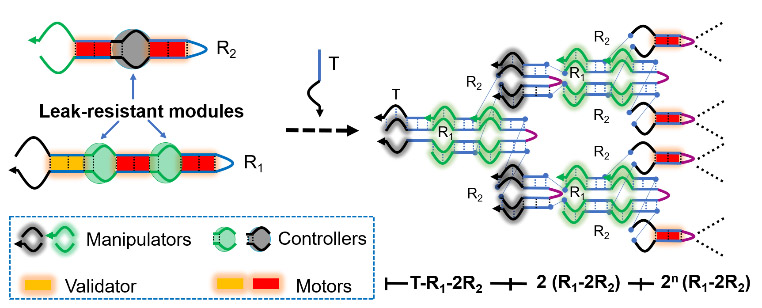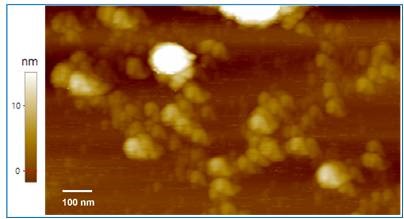
A research team led by Prof. YANG Liangbao from the Hefei Institutes of Physical Science (HFIPS) of the Chinese Academy of Sciences has recently proposed two conceptual models of intelligent DNA robots that can swarm into leakless nonlinear amplification when triggered. Results were published in Nanoscale Horizons.
Nonlinear DNA signal amplification has unique application value in nanotechnology and nanomedicine.
In this study, two conceptual models were designed through innovative design principles in methodology and codification of novel embedded programs for the first time.
The two models are composed of multifunctional manipulators, trigger validator, smart leak-resistant path controllers and automatic assembly motors. When exposed to a correct trigger, a cascade event would be initiated that causes the embedded program to go into nonlinear amplification.
This study provides a new blueprint for the design of advanced signal amplifiers and intelligent targeted drug delivery platforms, promoting their applications in nanotechnology and nanomedicine.
This research was supported by the National Science Foundation of China, the Natural Science Research Project of Universities in Anhui Province and so on.

Figure 1. Schematic illustration for pathway and pattern of two intelligent DNA robots swarming into the leakless nonlinear amplification in response to trigger. (Image by LI Shaofei)

Figure 2. Partial enlarged details of atomic force microscopy images for nonlinear amplification. (Image by LI Shaofei)

86-10-68597521 (day)
86-10-68597289 (night)

52 Sanlihe Rd., Xicheng District,
Beijing, China (100864)

